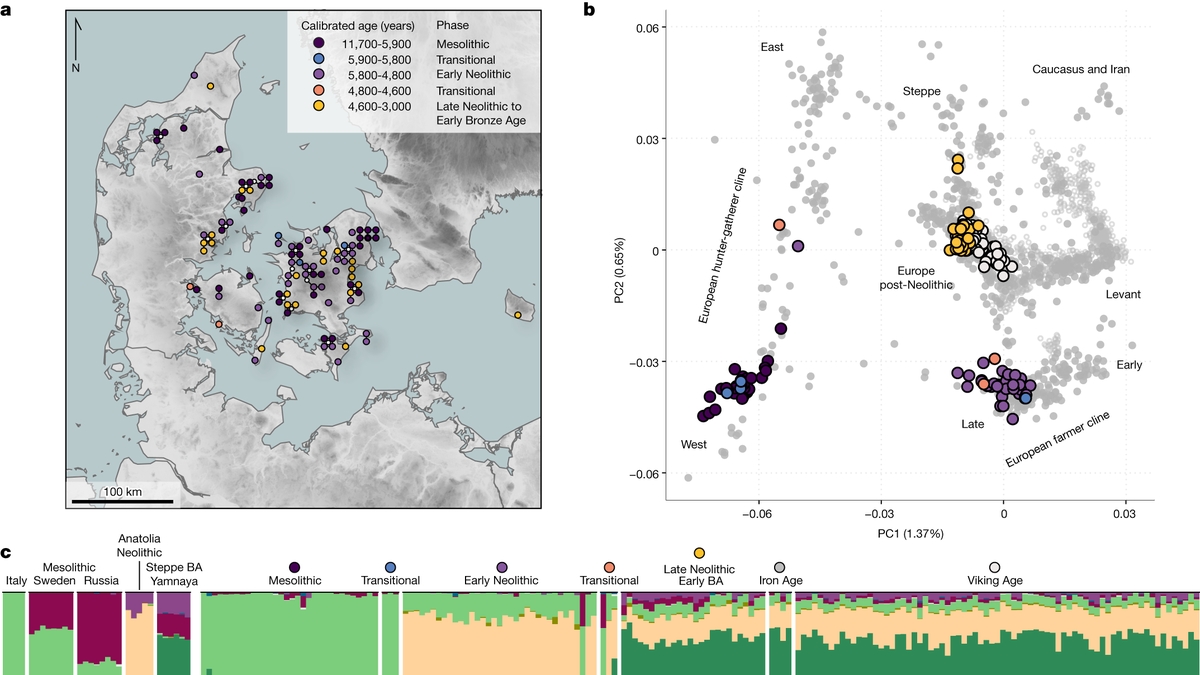A new perspective on prehistoric Denmark
A groundbreaking study by Sweden’s Lund University has revealed new insights into demographic and cultural changes in prehistoric Denmark. Analyzing tooth and skeletal DNA found in the area, researchers discovered two significant population changes over the course of 7,300 years, painting a vivid picture of its turbulent past.
the arrival of the first farmers
About 5,900 years ago, the first farmers associated with the Funnel Beaker culture arrived in Denmark. These early farmers from Anatolia provided his first of two population changes. Indigenous hunter-gatherers related to other Western European hunter-gatherer cultures of the time were virtually extinct within a few generations of this arrival.
Attrition rates due to violence and illness
Contrary to previous theories that suggested peaceful coexistence and interaction between different groups, this study shows that the transition from hunter-gatherer to agricultural societies was likely accompanied by violence. Additionally, new pathogens introduced by farmers and their livestock may have contributed to the rapid disappearance of hunter-gatherer communities in the region.
Second population replacement
About 1,000 years later, another wave of immigrants related to the Yamnaya culture of southern Russia arrived from the Eastern Steppes. This second wave caused further population turnover, effectively wiping out the peasant population that had previously been replaced by hunter-gatherers. This study reveals that the genetic lineage of modern Danes and Swedes can be traced back to these populations of Yamnaya descendants.
Meaning of research
These findings allow us to improve our understanding of historical migration flows and changes in vegetation and land use. The research could also improve knowledge about genetics and the development of certain diseases, which could be beneficial for medical research. It is suggested that similar events have occurred elsewhere in Scandinavia, suggesting that this study may have broader implications for understanding genetic heritage and disease evolution across the region. is showing.
Challenging conventional theories
This study therefore challenges previously held beliefs about the transition from hunter-gatherer to agricultural societies in Scandinavia. It provides new insights into the complex demographic and cultural changes that occurred in prehistoric Denmark, and provides a more nuanced understanding of the country’s ancient past.
Joint research
The research includes collaboration with approximately 40 higher education institutions and organizations across Europe, the United States and Australia, demonstrating the importance of international collaboration in advancing our understanding of human history and evolution .
